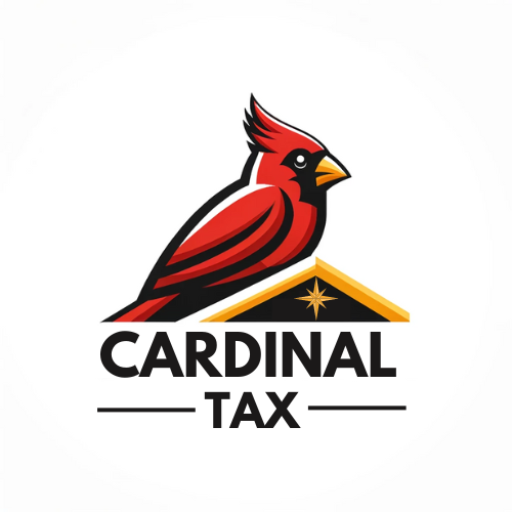As a small business owner, strategically reducing your tax burden is essential for maximizing your income and achieving your financial goals. This involves leveraging tax deductions, taking advantage of tax credits, and identifying other sources of tax savings. A CPA can assist you with these tax planning strategies and offer additional ways to minimize your tax bill.
1. Employ a Family Member
Hiring family members is a time-tested strategy to reduce your tax bill. The IRS provides options to shield more of your income from taxes by employing your spouse and/or children.
Hiring Your Spouse
If your business is a sole proprietorship, you can hire your spouse as an employee and pay them a salary. This income is subject to federal income tax and FICA taxes (Social Security and Medicare). However, they won’t need to pay federal unemployment tax if they are a legitimate employee, not a business partner.
Hiring Your Children
Children must pay federal income tax on their wages, but they may be exempt from certain taxes based on their age. If you run a sole proprietorship or both parents are partners in the business:
- Children under 18 are exempt from FICA taxes.
- Children under 21 are exempt from FUTA taxes.
Employing children under 18 saves you the employer’s half of their FICA taxes (6.2% for Social Security and 1.45% for Medicare). Additionally, hiring children under 21 exempts you from FUTA taxes.
Note: These exemptions don’t apply if your business is a corporation, estate, or a partnership where only one or neither parent is a partner.
Hiring your child also allows them to start contributing to an IRA for retirement, setting them up for long-term financial benefits.
Important Considerations
When hiring family members, ensure they are performing specific jobs for reasonable pay. For example, you could pay a baby to appear in an ad but not as a full-time employee. Always consider what you would pay someone else’s child for the same work.
2. Fund a Retirement Plan for Yourself and Your Employees
Small business owners have access to various retirement plans that offer significant tax savings:
- One-participant 401(k) plan: Allows contributions up to $69,000 (2024) if under 50, with an additional catch-up contribution of $7,500 for those over 50.
- Regular 401(k) plan: Available if you have other employees.
- Simplified Employee Pension (SEP) Plan: Simple to set up, allowing contributions up to 25% of compensation or $69,000, whichever is less. Contributions to employees’ accounts are deductible.
- Savings Incentive Match Plan for Employees (SIMPLE) IRA: Available for businesses with 100 or fewer employees. Employers must match up to 3% of employee contributions or contribute 2% of compensation, with limits up to $19,000 including catch-up contributions.
3. Consider Changing Your Business Structure
The structure of your business has significant tax implications. Options include:
- Sole proprietorship
- Partnership
- Limited liability company (LLC)
- S corporation
- C corporation
Each structure affects your taxes differently. Some are taxed at the corporate level, while others pass income through to owners, impacting personal income tax rates. Research or consult your CPA to determine the most tax-efficient structure for your business.
4. Consult a Tax Professional
Effective tax planning can significantly boost your after-tax returns and reduce tax risk. Hiring a tax professional helps you navigate the tax code, optimize deductions, and set your business on a path to financial success.
5. Create an Accountable Plan for Employee Reimbursements
Reimburse employees for business expenses like food, lodging, and travel through an accountable plan. This separates reimbursed amounts from taxable income, reducing both employees’ income tax liability and your payroll tax withholding.
6. Reduce Your Adjusted Gross Income
Certain expenses can be deducted from your gross income to reduce your adjusted gross income (AGI). These include:
- Interest on student loans
- Tax-deferred retirement plan contributions
- Contributions to health savings accounts (HSAs) and Archer medical savings accounts (MSAs)
- Business expenses
- Alimony payments (pre-2019 agreements)
- Eligible early withdrawal penalties
- Eligible educator expenses
7. Take Advantage of Tax Deductions
Common tax deductions for small businesses include:
- Education and training
- Marketing expenses
- Insurance premiums
- Business meals
- Travel expenses
- Home office expenses
- Business interest expenses
- Qualified Business Income (QBI) deduction
Consult a CPA to identify all applicable deductions and avoid costly mistakes.
8. Defer Business Income
Strategically delaying income receipt to the next tax year can defer taxes, especially if you anticipate a lower-tax year. For example, bill in late December to receive payment in January.
9. Accelerate Business Income
If expecting a tax increase, maximize revenue before year-end by accelerating billing and collections. Here we’re looking at effective tax increases in the future and saying, “I’ll take my income now to reduce taxes next year.” C Corps do this all the time around election cycles.
10. Acquire Assets Late in the Year
Estimate your income towards year-end and acquire necessary tangible assets to lower your tax burden. Consult your accountant on how to maximize tax benefits associated with each purchase.
